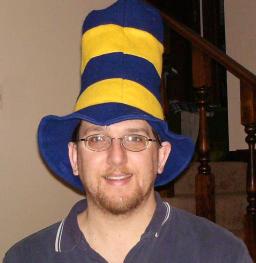law of the marketplace?
Earlier this week, a person named Anonymous found my post from last month on the minimum wage. Anon raises a few good points, but also includes this breathtakingly inane argument about economics:
To raise the minimum wage is a true "crime against humanity!" It is a lie hatched in that same hell that tries to persuade us that somehow or other, we can ignore the law of the marketplace. As with the law of gravity, we certainly can ignore it. But we can not avoid the consequences of ignoring it.
Anon is simply wrong. Economics is not a science in the sense that physics is. Gravity has existed since virtually the beginning of the universe. When Isaac Newton formulated his law of gravitation, he was describing something that was already there, something that is (quite literally) universal. We cannot escape the effects of gravity, even if we could travel to other planets or other galaxies. By contrast, economic systems are merely human creations. The "law" of supply and demand may be a useful tool to aid producers in pricing their goods and services in a market economy, but it is not truly a law in any sense of the word. Nobody is required to set prices for maximum profit. And outside a market economy, supply and demand may not be relevant.
In a gift economy, for example, generosity is more highly valued than profit margins. Success is defined by what one gives away. The potlatch custom of Pacific Northwest tribes is perhaps the best known historical example, but gift economies still thrive today in many forms.
Computer programmer Richard Stallman argues for a software gift economy:
When your friend says "that's a nice program, could I have a copy?" At that moment, you will have to choose between two evils. One evil is: give your friend a copy and violate the licence of the program. The other evil is: deny your friend a copy and comply with the licence of the program.
Once you are in that situation, you should choose the lesser evil. The lesser evil is to give your friend a copy and violate the licence of the program.
Now, why is that the lesser evil? The reason is that we can assume that your friend has treated you well and has been a good person and deserves your cooperation...
However, to be the lesser evil does not mean it is good. It's never good - not entirely - to make some kind of agreement and then break it. It may be the right thing to do, but it's not entirely good.
Stallman has devoted much of his life to saving computer users from this dilemma. Since 1983 he has created software under a special license that gives users what he calls that four essential freedoms:
- Freedom to use the program for any purpose
- Freedom to study the source code for the program
- Freedom to help their friends and neighbors by sharing copies
- Freedom to give back to the community by submitting modifications and improvements
Through the GNU project and the Free Software Foundation, Stallman has significantly influenced the development of the software industry. Most of the software that makes the Internet work is available under Stallman's GNU license. It is not too much of a stretch to say that the Internet is the product of a gift economy.
Another gift economy, one that has survived from ancient times and still thrives today, is the church. Members do not go to church to purchase goods and services. Churches rely primarily on voluntary giving to meet their budget requirements. And even though many churches struggle to make ends meet, the success of this organization for 2000 years is a testimony to the fact that market economics does not control our fate.
Which brings me back to anon's comment. Contrary to what anon declares, as a matter of fact we can ignore the "law of the marketplace." A market-based economy is just one of many possible economic systems. If our goal is to eventually funnel all our money into the hands of those who are most eager to obtain it, then a pure market economy is the way to go. If, on the other hand, we value human dignity more than profit margins, we need to look for ways to temper the market's more ruthless effects.
Labels: gift economy, social justice






